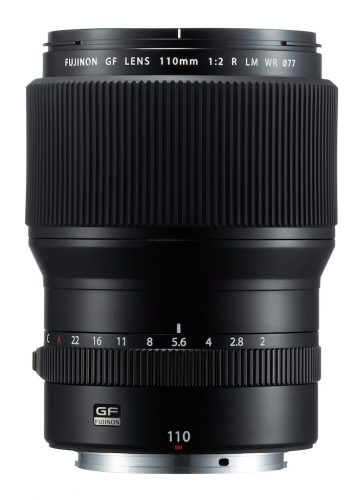
Fujifilm just announced a pair of new lenses for its GFX 50S medium format camera – the GF 110mm f/2 R LM WR (87mm equivalent in 35mm format) and the GF 23mm f/4 R LM WR (18mm equivalent). [Read more…]
Digital Camera News, Reviews and Tips
By Eric Reagan

Fujifilm just announced a pair of new lenses for its GFX 50S medium format camera – the GF 110mm f/2 R LM WR (87mm equivalent in 35mm format) and the GF 23mm f/4 R LM WR (18mm equivalent). [Read more…]
By Eric Reagan

Fujifilm has been killing it over the past few years in both film and digital formats. Even though the company killed off the last type of peel-apart film when it discontinued its FP-100c film earlier this year, Fujifilm Instax is the hottest photography product on the market. The Fuji X-Series lures DSLR users over to the mirrorless side in droves. And now, we’re talking about a medium format digital camera from Fuji. [Read more…]
By Eric Reagan

Hasselblad has downsized medium format cameras with the introduction of the new Hasselblad X1D. With the same 50MP 43.8mm x 32.9mm CMOS sensor we see in the much more expensive Hasselblad H5D, the X1D shaves size, weight and price for a formiddable medium format package that could be a sign of the future for photography pros and enthusiasts. [Read more…]
By Eric Reagan

Anyone that’s shot a DSLR in a remotely serious manner is aware of the crop factor for APS-C format cameras when compared to their full frame cousins. Nikon and Sony APS-C cameras yield a 1.5x crop factor, while Canon APS-C cameras have a 1.6x crop factor.
And, invariably, if you use the phrase “crop factor,” someone is going to yell at you and tell you that you aren’t cropping anything. However, the term is ubiquitous in identifying the altered field of view caused by using smaller sensors in cameras along with full frame lenses.
We also commonly use the phrase “equivalent focal length” to describe the change in the field of view as captured by an APS-C sensor. For instance, the popular Canon EF 50mm f/1.8 lenses have an 80mm equivalent focal length when used with a Canon Rebel series camera. Of course, most of us understand that this is a misnomer and that the 50mm lens does not change at all to become an 80mm lens when used on a different camera. It is simply that the 50mm lens has a narrower field of view on the Canon Rebel DSLR thanks to the smaller sensor.
For those coming from a digital world to test the film waters with medium format cameras, the 35mm crop factor for medium format lenses and film types can be confusing when a 50mm lens can be ultra-wide and a 90mm lens is considered a normal lens. [Read more…]
By Eric Reagan
Ever since CineStill released the CineStill 800T 35mm film in 2012, it has had requests pouring in for a 120 version of its 800T film. It looks like that’s finally going to happen. [Read more…]